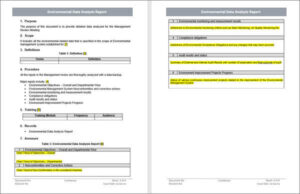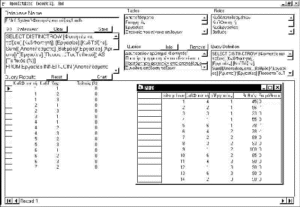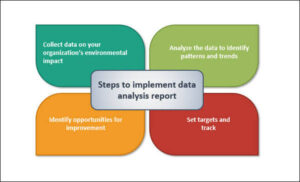Back to: Environmental Biology 300 Level
Welcome to class!
Imagine you carried out a survey to check pollution levels in a Lagos drainage channel, or you monitored air quality in a Kaduna neighbourhood. What happens after you collect all that information? If it just sits in your notebook or computer and no one understands it, the job isn’t complete. This is where environmental data analysis and report writing come in. They help turn raw facts into useful knowledge and action.
Environmental Data Analysis And Report Writing
What is Environmental Data?
Environmental data refers to any information gathered about the natural world. This can include measurements like rainfall patterns, soil acidity, number of birds in a forest, temperature changes, pollution levels, or the types of plants in an ecosystems.

Data Collection Methods
Field observations: Physically recording environmental features such as erosion or vegetation cover.
Surveys and questionnaires: Gathering opinions and responses from people living in an affected area.
Sampling: Collecting soil, water, or air samples for laboratory testing.
Sensors and technology: Using digital tools like drones, GPS, and weather stations to measure environmental variables.
What is Environmental Data Analysis?
This is the process of organising, interpreting, and making sense of the data collected. It helps you answer questions like: What does this data mean? Are there patterns? Is pollution increasing or decreasing?
Steps in Environmental Data Analysis
Data organisation: Entering data into tables, charts, or software like Excel or SPSS.
Data cleaning: Removing errors, duplicates, or inconsistent values.
Statistical analysis: Using averages, percentages, graphs, or trend lines to interpret results.

Drawing conclusions: What does the analysis reveal? Are conditions improving or worsening?
What is Environmental Report Writing?
After analysing data, the next step is communicating the findings in a well-structured report. A good environmental report explains the situation clearly, backs it up with evidence, and makes useful recommendations for action.
Structure of a Good Environmental Report
Title Page: Topic, student name, date.
Introduction: Background and objectives of the study.
Methodology: How the data was collected.
Results and Analysis: Tables, graphs, and key findings.
Discussion: What the results mean and why they matter.
Conclusion and Recommendations: Summary and suggested actions.
References: Sources used during the research.
Why This is Important
It helps decision-makers take action based on facts.
It builds your credibility as an environmental scientist.
It improves public understanding of environmental problems.

It supports environmental policies and academic research.
Real-Life Example
In 2022, a student group from the University of Nigeria Nsukka conducted a wetland survey in Enugu. They collected data on illegal dumping and wrote a report submitted to the local government. Their clear charts, photos, and recommendations helped authorities start clean-up efforts. That’s the power of data and reporting.
Summary
- Environmental data includes information about pollution, weather, biodiversity, etc.
- It is collected through fieldwork, surveys, lab tests, and digital tools.
- Data analysis involves cleaning, interpreting, and finding patterns.
- Report writing communicates findings clearly and professionally.
- Good reports help drive action, policies, and awareness.
Evaluation
- What is environmental data?
- Mention two methods of environmental data collection.
- List three steps involved in environmental data analysis.
- Outline the main parts of a good environmental report.
- Why is environmental report writing important?
You’ve done wonderfully today! Always remember, being able to gather, analyse, and communicate environmental information gives you power—the power to influence change, support your community, and lead with knowledge. Afrilearn is proud to be part of your learning journey.
